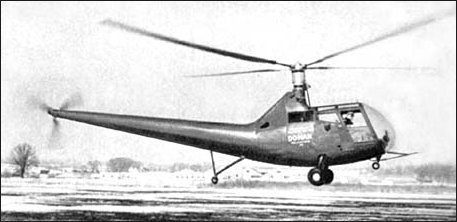
| Doman LZ-1A 1950 |  |
 |

| Doman LZ-1A 1950 |  |
 |
|
In 1945, Glidden S. Doman formed Doman Helicopters Inc. in order to develop various helicopter engineering concepts. These included a new hub system which was essentially similar to the mechanism used on a variable pitch propeller. The rotor system also incorporated a gimbal mounting to provide the necessary tilting of the rotor disc. Doman's theories were tested initially by installing an experimental system on a USAF Sikorsky R-6. This helicopter was known as the Doman LZ-1A and it started flight tests in early 1950 with remarkably good results. It was followed by the larger LZ-2A Pelican. R.Simpson "Airlife's Helicopter and Rotorcraft", 1998 * * * Doman Helicopters Inc. was founded in 1945 for the purpose of exploiting patents taken out by an engineer named Gliden S. Doman, who during World War II had worked with Sikorsky. The patents in question related to a new system for controlling and attaching heli-copter blades. The blades are held on the hub as if nothing more than mere variable-pitch airscrew blades. As regards the inclination of the rotor-tip plane with respect to the fuselage, this is assured by gimbal-mounting the rotor hub and rotating it by means of a unique constant-velocity driving system. No blade-flapping hinges, drag hinges or hinge dampers are required and bearings subject to centrifugal loads with oscillating motion are reduced to a minimum. The Doman rotor incorporates the speed reduction gearing as an integral part of the rotor assembly. All moving parts are contained within a common housing which precludes damage from weather or foreign matter. Doman first tested his rotor in 1947 on a Sikorsky R-6 which had been loaned to him by the U.S. Air Force. Doman LZ-1A This helicopter was a Sikorsky R-6 (lent by the USAF) converted to a Doman rotor and control system. The rotor had four blades, and though their length was increased from 11.58 to 12.2 metres, this resulted in improved hovering ability and, curiously enough, did not lower the top speed. The first flights took place early in 1950 and it should be noted that during one experimental flight this rotorcraft flew for forty minutes without the pilot needing even once to touch the cyclic pitch control. P.Lambermont "Helicopters and Autogyros of the World", 1958
| ||||||||||||

|
|
 |